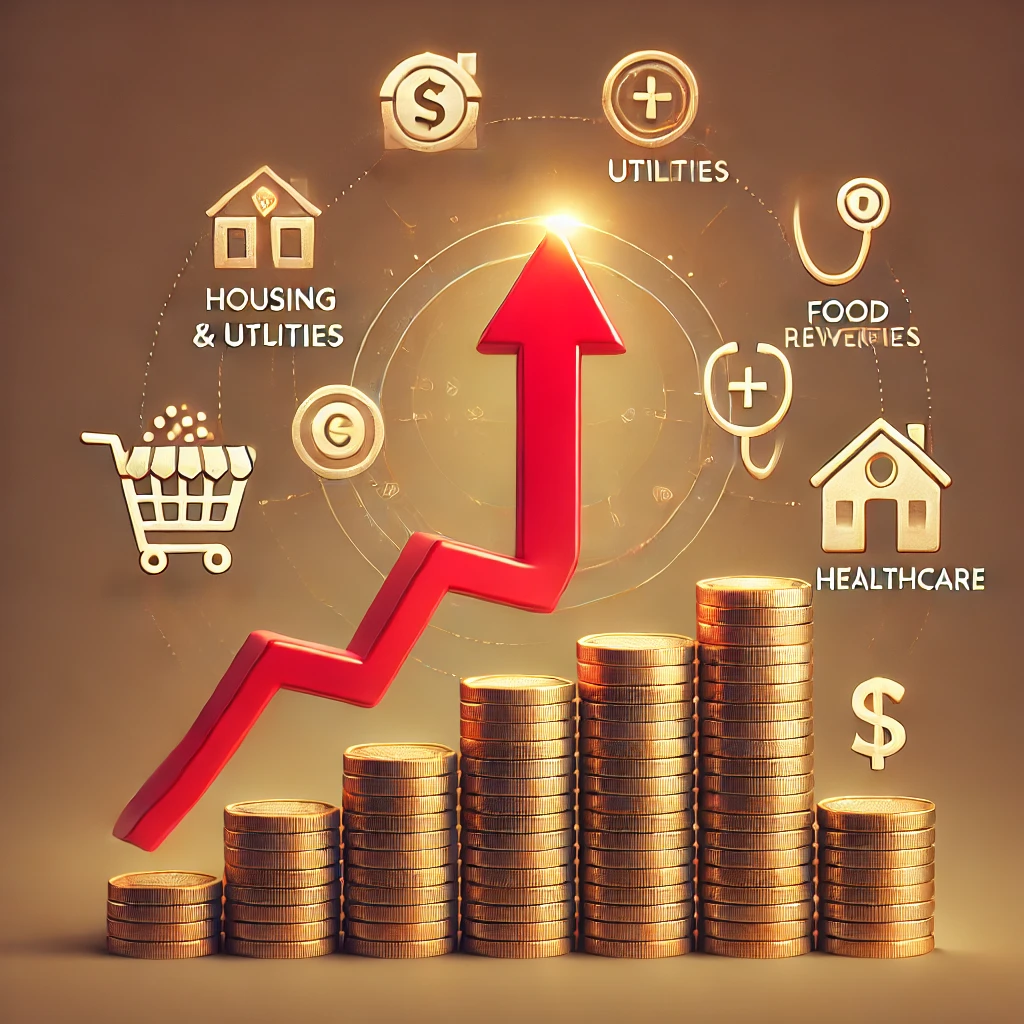SA's Inflation Holds Steady at 3.2% in February Amid Sectoral Price Shifts
Stats SA Director of Consumer Price Index (CPI) Operations, Lekau Ranoto, highlighted several categories that experienced higher annual inflation rates in February.

- Country:
- South Africa
Consumer price inflation in South Africa remained at 3.2% in February, unchanged from January, according to the latest data from Statistics South Africa (Stats SA). Despite overall stability, various sectors experienced notable shifts in price trends, with inflation rates fluctuating across different product categories.
Key Contributors to Annual Inflation
The primary drivers of the annual inflation rate were:
- Housing and Utilities: This category recorded an annual inflation rate of 4.4%, contributing 1.0 percentage point to the overall inflation rate.
- Food and Non-Alcoholic Beverages: Prices in this category accelerated to 2.8% in February, up from 2.3% in January, contributing 0.5 percentage points to inflation.
- Restaurants and Accommodation Services: Inflationary pressures in this category remained significant, although the exact contribution was not specified.
Inflation Trends Across Sectors
Stats SA Director of Consumer Price Index (CPI) Operations, Lekau Ranoto, highlighted several categories that experienced higher annual inflation rates in February. These included:
- Recreation, sport, and culture
- Food and non-alcoholic beverages
- Alcoholic beverages and tobacco
- Communication services
Conversely, inflation cooled in other sectors, including:
- Personal care and miscellaneous services
- Health
- Restaurants and accommodation
- Furnishings, household equipment, and routine maintenance
- Transport
Rising Costs of Essential Food Items
One of the most significant observations in February was the rise in food and beverage prices. Several essential food items saw higher inflation rates:
- Fruit and nuts, vegetables, hot beverages, seafood, meat, and cereals all recorded increased price pressures.
- In contrast, cold beverages, milk, dairy, eggs, oils, fats, sugar confectionery, and desserts saw slower price increases.
Ranoto noted a particular concern in maize meal prices, a staple food in many South African households. Inflation in maize meal reached a 17-month high, while samp inflation hit a 19-month peak. These increases were largely attributed to rising costs in farming and manufacturing, as reflected in the latest producer price index (PPI) data.
Meat Prices Hold Steady, But Beverages Continue to Soar
Meat prices remained stable in February, recording a monthly change of 0% and an annual rate of 0%. This suggests that the meat market has managed to resist broader inflationary pressures.
On the other hand, hot beverages saw a sharp rise, with an annual inflation rate of 14.6% in February, up from 13.7% in January. This indicates that items like coffee and tea are becoming more expensive, possibly due to supply chain disruptions or increased demand.
Healthcare Costs on the Rise
Stats SA also reported a significant 10.5% increase in medical aid premiums in 2024, signaling a sharp rise in healthcare costs. Health services overall saw a 6.1% price increase, compared to 5% last year, raising concerns about the affordability of medical care for many South Africans.
Implications and Outlook
While the overall inflation rate remains within a stable range, the divergence between sectors highlights the varying economic pressures affecting different industries. Rising food and healthcare costs could put additional strain on household budgets, particularly among low-income consumers.
The South African Reserve Bank (SARB) continues to monitor inflationary trends closely, balancing efforts to keep inflation within target while supporting economic growth. With persistent price pressures in essential goods and services, policymakers may need to adjust their strategies to maintain financial stability in the months ahead.
As inflation dynamics evolve, South African consumers will need to remain vigilant about price trends and potential future increases in essential goods and services.










